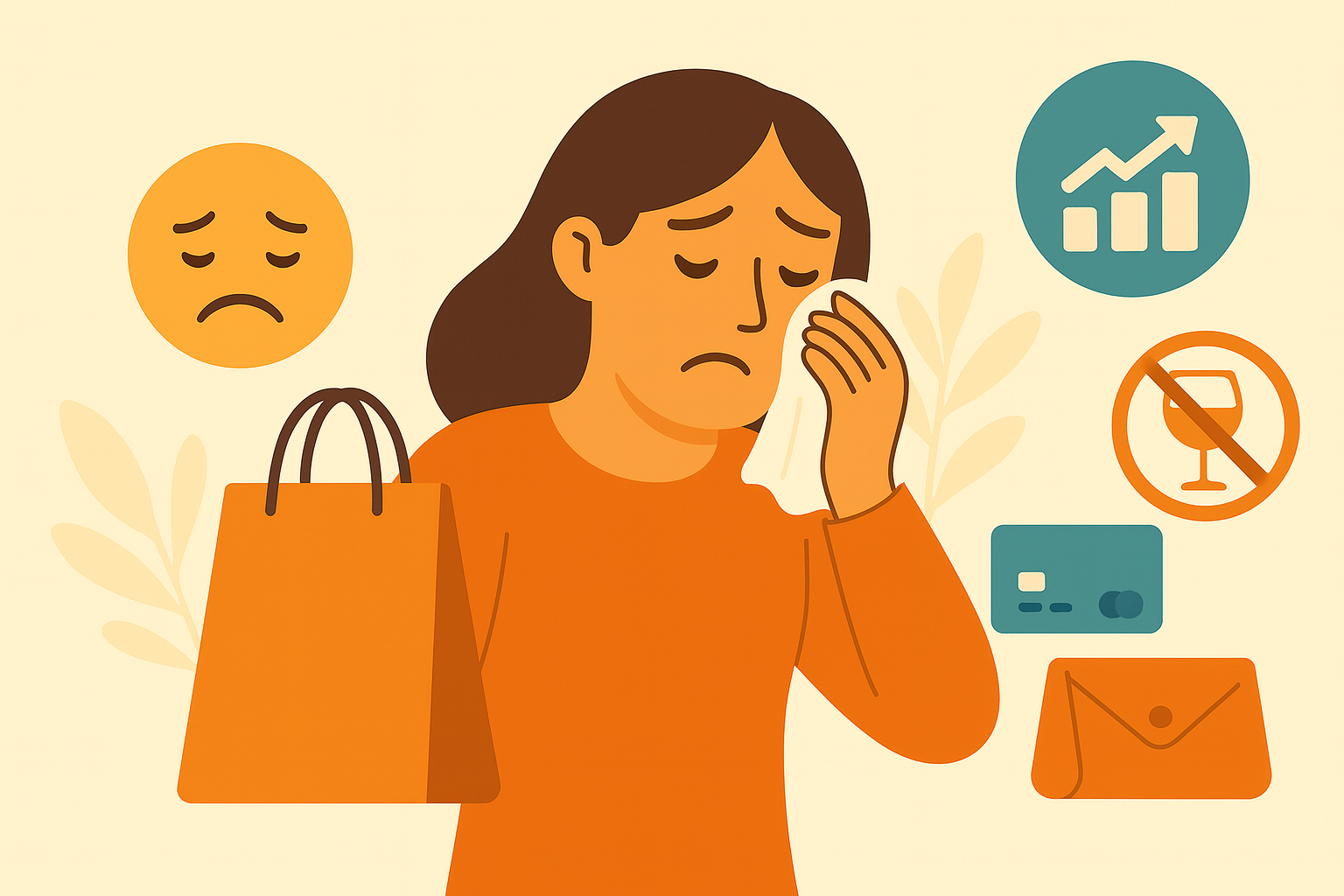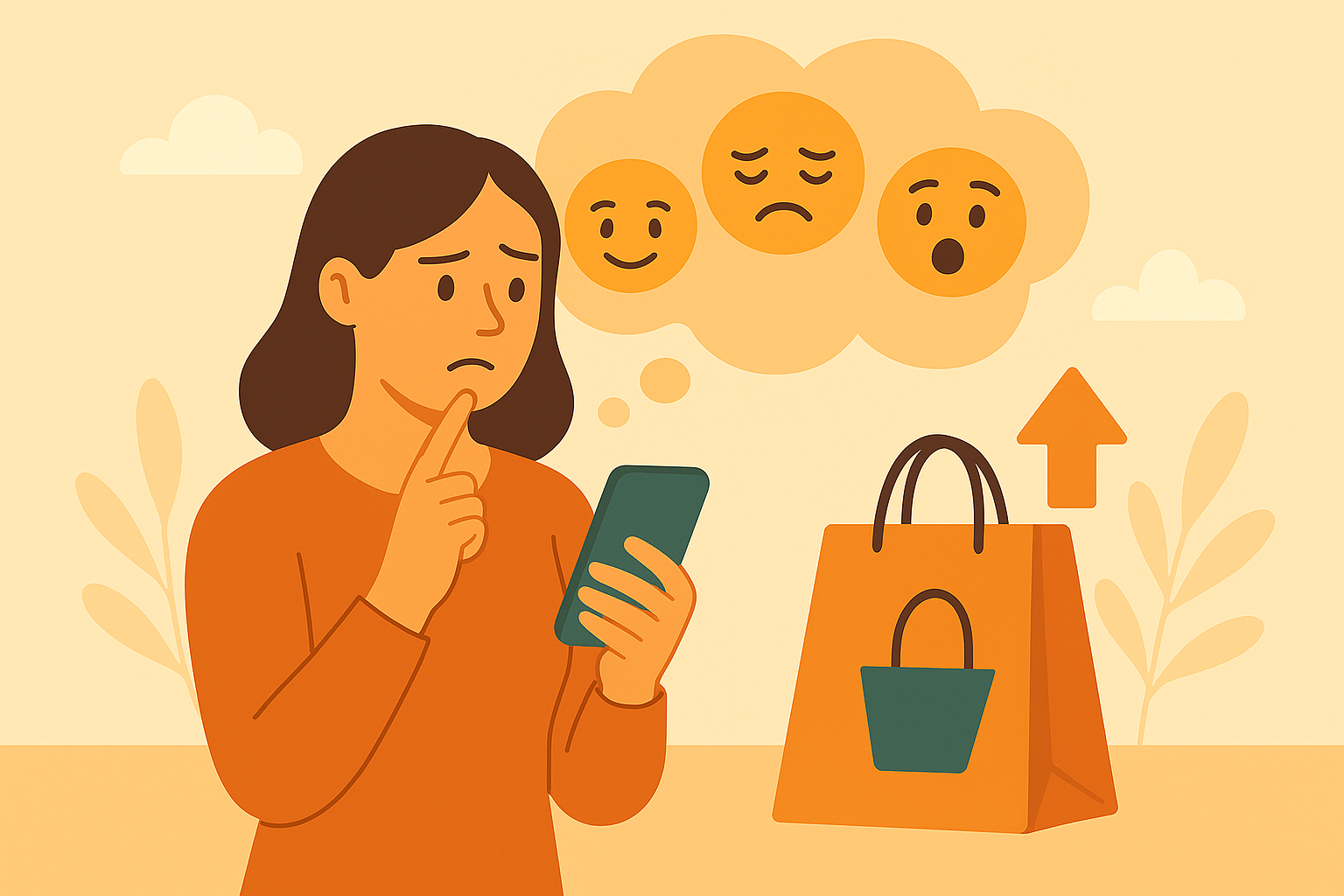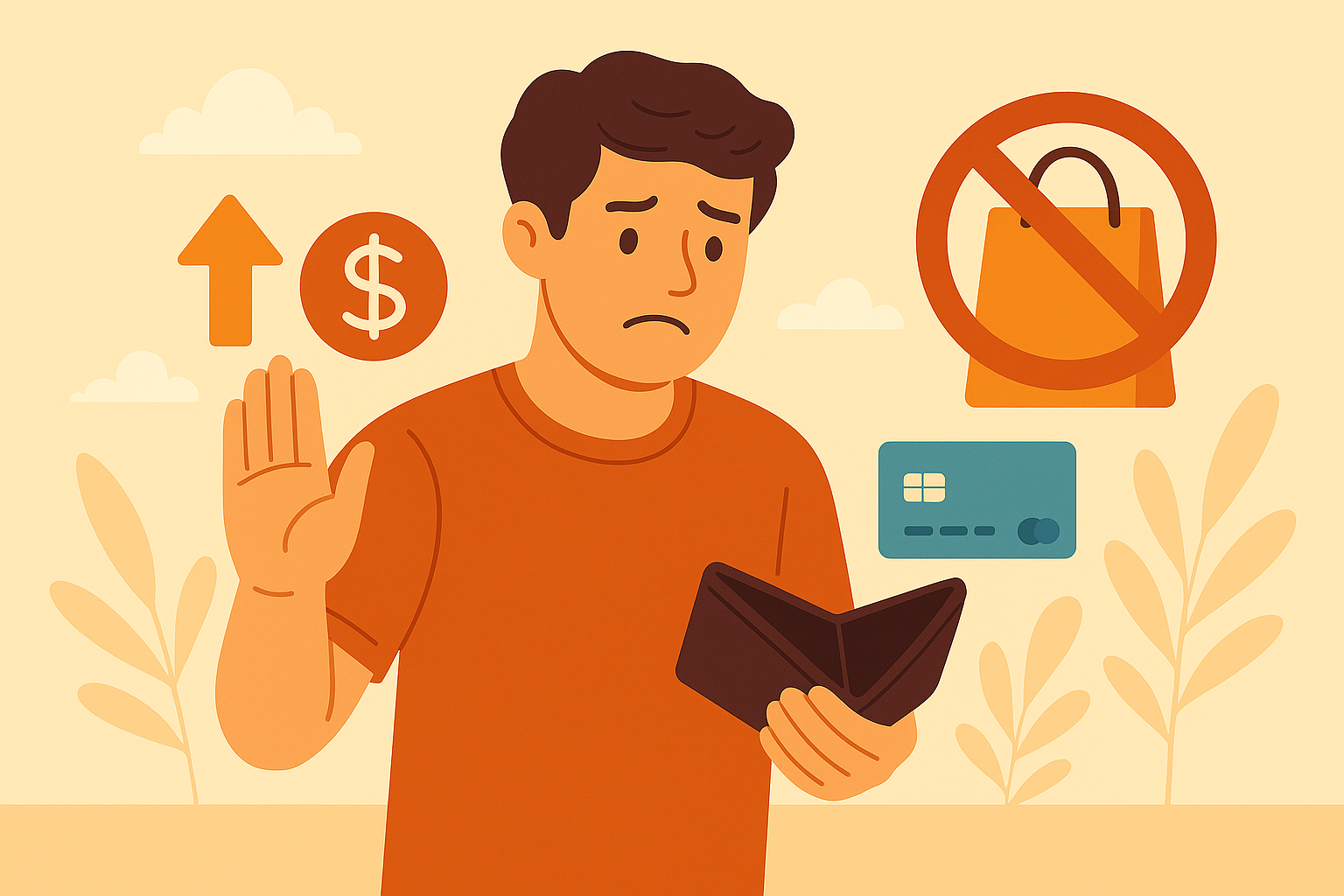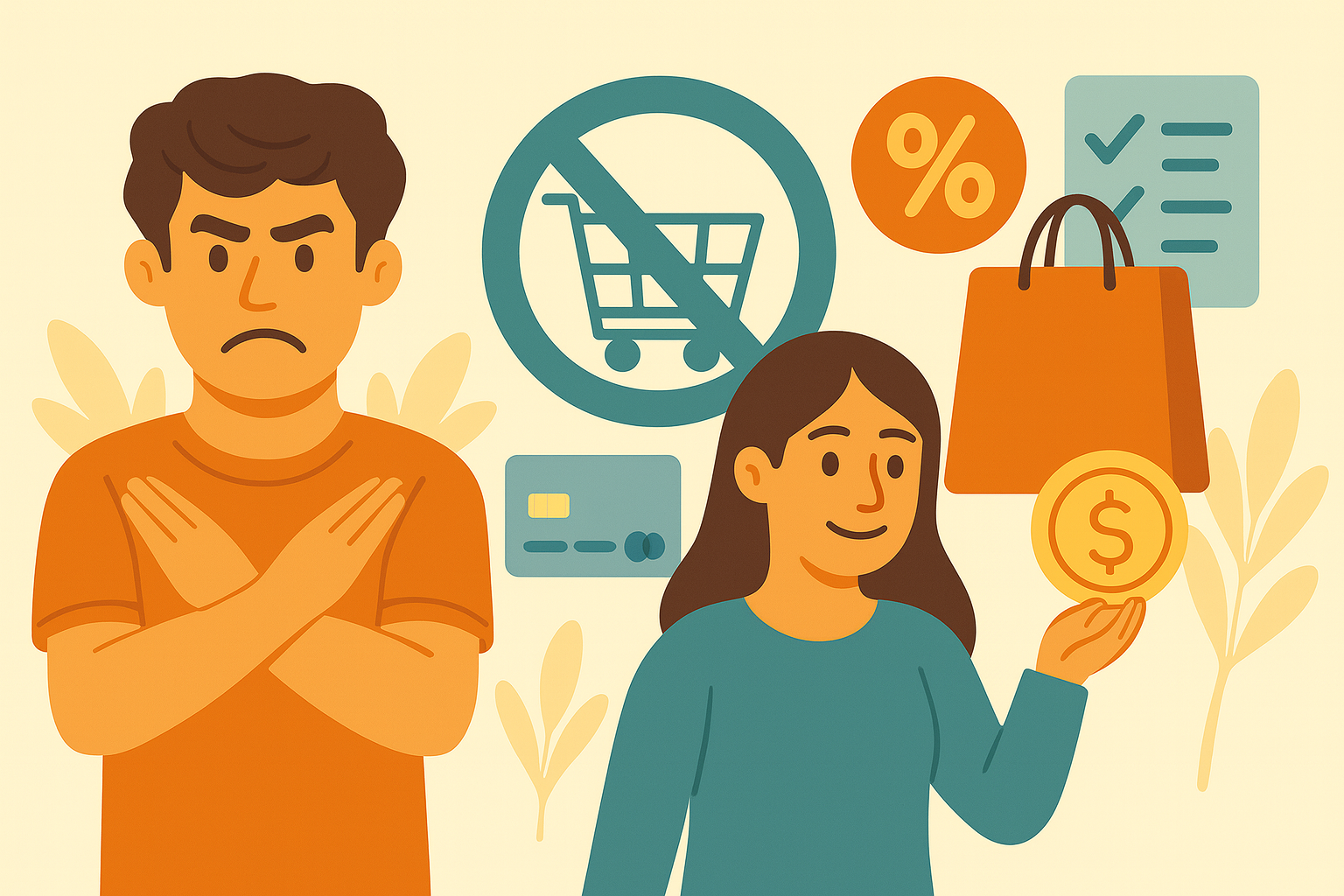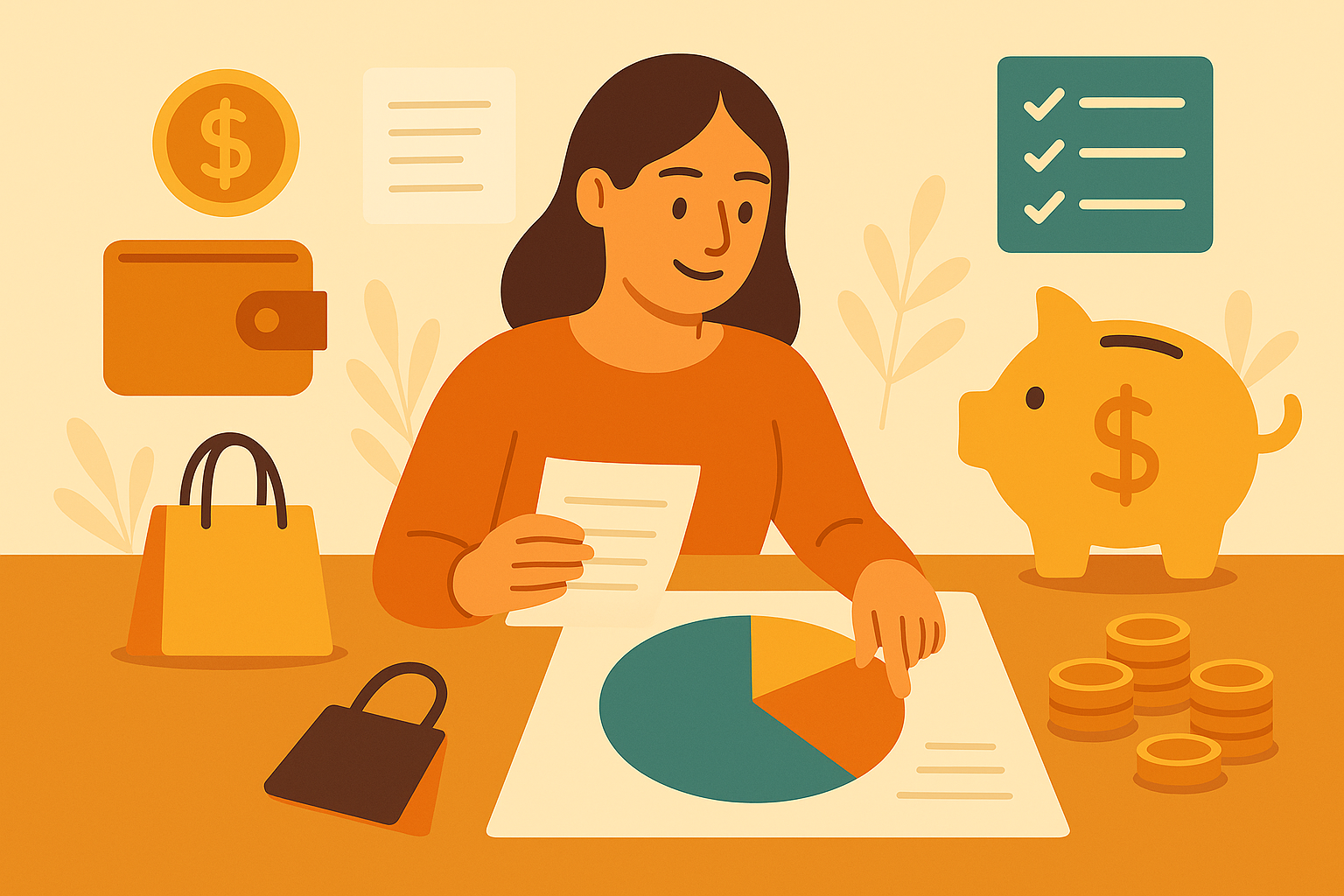You know that feeling, right? You’ve had the worst day at work, your boss was breathing down your neck, and suddenly you find yourself scrolling through Amazon at 11 PM with three items already in your cart. Or maybe you just had a fight with your partner, and before you know it, you’re walking out of Target with bags full of stuff you definitely didn’t plan on buying. This is emotional spending in action, and if you’ve ever been there, you’re not alone.
Yeah, I’m talking about that impulse to buy when emotions run high, and the truth is, emotional spending affects the majority of us at some point. It’s that sneaky habit of buying things based on how we feel rather than what we actually need.
Let’s get real about why we do this, what it’s actually costing us, and most importantly, what you can do about it without feeling like you need superhuman willpower.
What Exactly Is Emotional Spending?
Emotional spending is when you buy things not because you need them, but because of how you’re feeling. It’s shopping as therapy, retail as a band-aid, or buying stuff to fill a void that has nothing to do with needing a new pair of shoes.
Here’s the thing though—emotional spending isn’t always about feeling bad. Sure, stress, sadness, and anxiety are huge triggers, but you can also spend emotionally when you’re celebrating, feeling bored, or even when you’re trying to keep up with what everyone else seems to have.
The key difference? You’re making purchases based on your emotions rather than your actual needs or your financial plan. And that’s where things can get messy.
Why Do You Turn to Emotional Shopping When Feelings Run High?
Let’s dig into the psychology here because understanding why you do something is the first step to changing it.
Your Brain on Emotional Shopping
When you buy something, especially something you want, your brain releases dopamine. That’s the feel-good chemical that gives you a little rush of happiness. It’s the same stuff that gets released when you eat chocolate, scroll social media, or get likes on your posts.
Shopping literally makes you feel better—at least temporarily. Your brain remembers this, so the next time you’re feeling down, anxious, or stressed, it suggests, “Hey, remember how good that new sweater made us feel? Let’s do that again!”
It’s not weakness. It’s just your brain trying to help you feel better with the tools it has. The problem? It’s a short-term solution to what might be a long-term problem.
The Illusion of Control
Life can feel chaotic. Maybe your job is unpredictable, your relationships are complicated, or the world news makes you want to hide under your blankets. But when you shop? You’re in complete control.
You decide what to look at, what to buy, when to click “purchase,” and what color you want. In those moments, you’re making things happen. You’re not powerless. That feeling of control can be incredibly soothing when everything else feels like it’s spinning out of your hands.
Filling the Void
Sometimes emotional spending is about trying to fill something missing in your life. Maybe you’re lonely, so you buy things to feel connected to the lifestyle you see on Instagram. Maybe you’re bored, so you shop for entertainment. Or maybe you feel like you’re not measuring up, so you buy things to project the image of success.
Whatever the void is, shopping feels like it might fill it. Spoiler alert: it doesn’t. But your brain keeps hoping that the next purchase will be the one that finally does the trick.
Social Pressure and FOMO
Let’s not forget about the world we live in. You’re constantly seeing what other people have, what they’re doing, and what they’re buying. Social media has turned comparison into a full-time sport, and FOMO (fear of missing out) is real.
When everyone else seems to have the latest gadget, the trendy clothes, or the perfect home setup, it’s easy to feel like you need those things too. You don’t want to be left behind, so you spend to keep up—even if it means blowing your budget.
The Real Cost of Emotional Spending
Here’s where we need to get a little bit serious (but I promise to keep it light). Emotional spending isn’t just about the money leaving your account—though that’s definitely part of it.
Your Financial Goals Take a Hit
Every dollar you spend emotionally is a dollar that’s not going toward something you actually care about. Maybe you want to buy a house, take a dream vacation, pay off debt, or build an emergency fund. Emotional spending steals from future you.
You might not notice it with one purchase here or there, but over time? It adds up fast. That $50 impulse buy becomes $500 a month, which becomes $6,000 a year. Suddenly you’re wondering why you can’t seem to get ahead financially when you make decent money.
The Guilt Spiral
Ever bought something in the heat of the moment and then felt terrible about it later? That guilt is real, and it can actually make you feel worse than you did before you went shopping.
Then, because you feel guilty and stressed about spending money, you might… spend more money to feel better. It’s a vicious cycle, and it can be hard to break.
Clutter and Overwhelm
Emotional purchases often become clutter. They’re things you didn’t really need, might not even really like, and now they’re taking up space in your home. That physical clutter can contribute to mental clutter, making you feel more stressed and overwhelmed.
Ironic, isn’t it? You bought stuff to feel better, and now the stuff itself is making you feel worse.
How to Recognize Your Emotional Spending Triggers
If you want to get a handle on emotional spending, you need to know what triggers it for you. Everyone’s different, but here are some common triggers to watch out for:
Stress and anxiety: Bad day at work, overwhelming to-do list, general life pressure. This is the big one for most people. When cortisol levels spike, your brain looks for quick relief, and shopping provides that instant gratification.
Sadness or loneliness: Feeling down, missing someone, going through a tough time. Shopping can feel like companionship or a way to nurture yourself when you’re hurting. The packages arriving at your door can even feel like getting gifts from a friend.
Boredom: Nothing to do, mindless scrolling, looking for entertainment. When you’re understimulated, shopping gives your brain something to focus on. It’s engaging, it’s exciting, and it fills time.
Celebration: Good news, accomplishments, wanting to reward yourself. You got a promotion, finished a big project, or hit a goal. You deserve something nice, right? While treating yourself isn’t bad, it becomes a problem when it’s your automatic response to every win.
Social comparison: Seeing what others have, feeling left out, trying to keep up. This trigger has exploded with social media. You see curated highlight reels of other people’s lives and possessions, and suddenly what you have doesn’t feel like enough.
Fatigue: Being too tired to resist temptation or make good decisions. Decision fatigue is real. When you’re exhausted, your willpower is depleted, making you much more vulnerable to impulse purchases.
Pay attention to patterns. Do you always hit the mall after a stressful work week? Do you find yourself online shopping late at night when you can’t sleep? Does scrolling Instagram lead you straight to shopping websites? Maybe you notice you spend more during certain times of the month, or when specific people are in your life.
Keep a simple log for two weeks. Write down every unplanned purchase and what you were feeling right before you bought it. You’ll start to see clear patterns emerge, and those patterns are your roadmap to change.
Once you know your triggers, you can start to interrupt the pattern.
What to Do Instead: Stop Emotional Spending With These Strategies
Alright, so you know you’re an emotional spender. Now what? Here are some strategies that can help you break the cycle without making you feel deprived or like you need to become a minimalist monk.
The 24-Hour Rule
This one’s simple but powerful. When you want to buy something that’s not a necessity, wait 24 hours before purchasing. Put the item in your cart, close the tab, and walk away.
If you still want it the next day and it fits your budget, go ahead and buy it. But here’s what usually happens: by the next day, the emotional charge has worn off, and you often realize you don’t actually want or need the item.
To make this even more effective, take a screenshot of the item and save it in a folder on your phone called “Maybe Later.” This satisfies the urge to do something about the item without actually spending money. When you revisit the folder after 24 hours, you can make a rational decision.
For bigger purchases over $100, extend this to 48 hours or even a week. The larger the purchase, the longer the waiting period should be. This gives you time to research alternatives, compare prices, and really consider if this aligns with your priorities.
Create an Emotional Spending Budget
I know, another fund to think about. But hear me out. Set aside a small amount of money each month specifically for emotional purchases. Maybe it’s $50, maybe it’s $100—whatever works for your budget.
When you’re feeling the urge to spend emotionally, you can use this money guilt-free. The key is that once it’s gone for the month, it’s gone. This gives you permission to occasionally shop for emotional reasons while still protecting your bigger financial goals.
Find Free Alternatives to Emotional Shopping
Remember how shopping releases dopamine? Well, so do a lot of other things—and they’re free. Build yourself a list of alternative activities you can turn to when emotions run high:
- Go for a walk or run
- Call a friend
- Watch a favorite show or movie
- Do a hobby you enjoy
- Take a long bath
- Journal about what you’re feeling
- Exercise or do yoga
- Cook or bake something
- Play with a pet
- Clean or organize something (weird but effective)
The trick is to have this list ready before you need it. When you’re in the moment and feeling the urge to shop, it’s hard to think clearly about alternatives.
Unsubscribe and Unfollow
Make it harder for temptation to find you. Unsubscribe from marketing emails. Unfollow influencers who make you feel like you need more stuff. Delete shopping apps from your phone. Remove your credit card information from websites so there’s more friction in the buying process.
You’d be amazed how much easier it is to avoid emotional spending when you’re not constantly being marketed to.
Address the Root Emotion
This is the big one. If you’re constantly stressed, anxious, lonely, or unhappy, shopping is just masking the real issue. It’s not solving anything.
You might need to have difficult conversations, set boundaries, change jobs, go to therapy, or make other life changes. That’s hard work, and I get it. But dealing with the root cause of your emotions is the only way to truly break free from using shopping as a coping mechanism.
Track Your Emotional Spending Patterns
Knowledge is power. Use an app or a simple spreadsheet to track where your money goes. Categorize your purchases, and be honest about which ones were needs versus emotional wants.
When you see the numbers in black and white, it’s easier to recognize patterns and hold yourself accountable. Plus, tracking spending makes you more mindful, which naturally reduces impulse purchases.
Practice Gratitude
This might sound cheesy, but it works. Regularly reminding yourself of what you already have can reduce the constant feeling that you need more.
Try keeping a gratitude journal, or just take a few minutes each day to mentally list things you’re thankful for. When you appreciate what you have, you’re less likely to constantly chase the next purchase.
Know Your Spending Values
Here’s a strategy that doesn’t get talked about enough: create a list of what you actually value spending money on. Sit down when you’re calm and clear-headed, and write out 3-5 categories that truly matter to you.
Maybe you value experiences over things, so travel is on your list but clothes aren’t. Maybe you’re a foodie who loves trying new restaurants, but you couldn’t care less about having a fancy car. Perhaps quality time with family matters most, but keeping up with tech trends doesn’t.
When you know your values, it becomes easier to say no to purchases that don’t align with them. That trendy jacket might be calling your name, but if fashion isn’t one of your core values, it’s easier to recognize it as emotional spending and walk away.
Keep this list somewhere visible—in your phone, on a note card in your wallet, or as your laptop wallpaper. When you’re tempted to buy something, check it against your values list. Does this purchase support what you say matters to you?
Give Yourself Grace
Here’s the most important thing I want you to know: you’re going to slip up sometimes. You’re human. You’re going to have a terrible day and buy something you don’t need. That’s okay.
Don’t let one emotional purchase turn into a guilt spiral that leads to more emotional spending. Acknowledge it, forgive yourself, and get back on track. Progress, not perfection, is the goal.
The Bottom Line
Emotional spending is incredibly common, and it’s nothing to be ashamed of. But left unchecked, it can seriously derail your financial goals and keep you stuck in a cycle of temporary relief followed by lasting regret.
The good news? Once you understand why you’re doing it and recognize your triggers, you can start making changes. You don’t need perfect willpower or to never buy anything fun again. You just need awareness, a few good strategies, and the commitment to address your emotions in healthier ways.
Your future self—and your bank account—will thank you.
Now, I’d love to hear from you. What’s your biggest emotional spending trigger? Have you found any strategies that work for you? Drop a comment below and let’s figure this out together.
Remember, we’re all in this messy money journey together, and there’s no judgment here. Just real talk about real struggles and how to actually deal with them.
You’ve got this.


